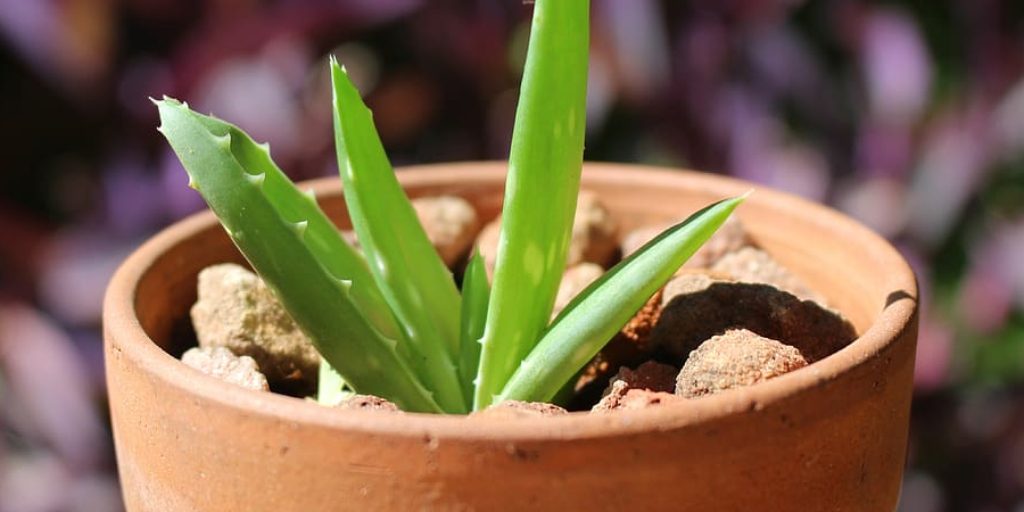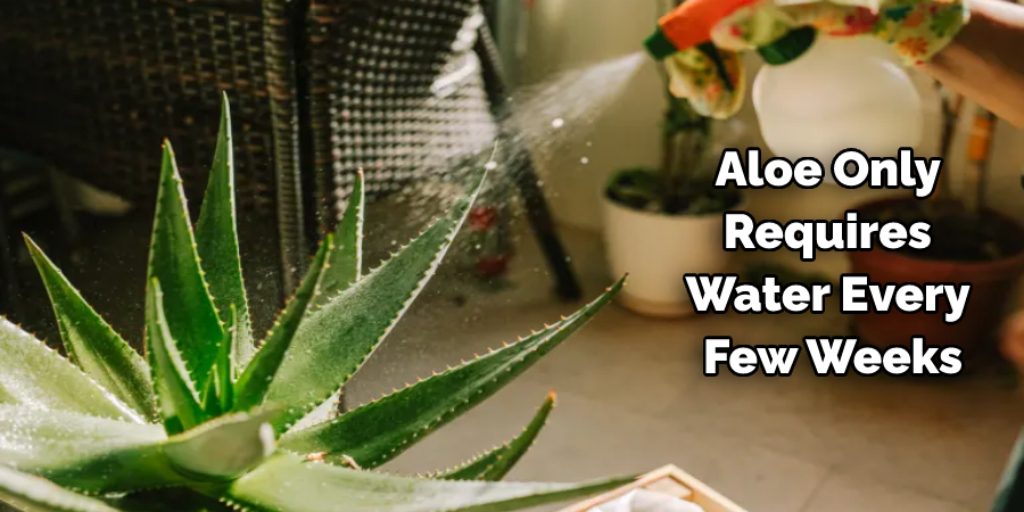How to Plant Aloe Vera Without Roots
Aloe Vera is a plant that can be used for many purposes. It has been known to help with heartburn and minor burns and sunburns. Aloe Vera plants can also produce edible fruit and have the same properties as the leaves on the plant.
In this blog, we will discuss how to plant aloe vera without roots so that you can have all the benefits of this plant. The most common use of aloe vera is in skin lotions, creams, or drinks that soothe irritated skin and reduce inflammation. Read on to know more about this great plant.
Many people are interested in starting their aloe vera plants but don’t want to spend the money on an aloe plant with roots. Luckily, it is possible to grow your own without paying for rooted plants.

10 Reasons Why You Should Plant Aloe Vera?
Before you know how to plant aloe vera without roots, you should know the many benefits of these plants. So here are some reasons why you should plant aloe vera:
1. Good for Digestive Problems
Aloe Vera is a plant that can help with stomach problems like heartburn and ulcers. The plant leaves contain aloin or barbaloin, which helps the large intestine contract more frequently.
It also includes chemicals that soothe inflammation in the digestive tract. Aloe vera juice is harvested from the leaves. It is a well-known home remedy for constipation and ulcers.
2. Used as Medicine for Cuts and Scrapes
Aloe vera gel contains anti-inflammatory properties that help soothe skin rashes, sunburn, bug bites, poison ivy, ringworm, and minor cuts and scrapes. It helps to speed up the healing process and also prevents scarring of the skin due to cuts.
3. Good for Skin Care
Aloe vera contains many nutrients that are good for your skin, such as essential fatty acids, minerals, Beta-carotene, Vitamin C etc. Aloe vera lotion is beneficial in treating acne and other skin issues such as psoriasis and eczema. It is also used in moisturizers, facial masks, and scrubs.
4. Aloe Vera is a Great Treatment for Acne:
Aloe vera is beneficial in treating acne. Aloe Vera has antibacterial properties that help treat impurities and aid the natural healing process by killing acne-causing bacteria. It also treats existing blemishes, reducing swelling and redness from these lesions.
5. Aloe Vera Makes Your Hair Grow Faster:
Aloe vera contains proteins that are good for skin and hair. It can stimulate the scalp, which helps to improve your hair’s health by promoting healthy hair growth. Aloe Vera is considered one of the best natural remedies for long, shiny & strong tresses.
6. Treats Insect Bites:
Aloe vera contains aloins and other chemicals that can help reduce swelling and stinging associated with insect bites, such as wasp stings. It also effectively treats other skin irritations related to poison ivy, poison oak, and poison sumac.
7. Treats Skin Conditions:
Aloe vera contains various nutrients, such as vitamins A and C, antioxidants, and enzymes that help nourish the skin. These properties make aloe vera an effective treatment for various skin disorders like psoriasis, eczema, and acne vulgaris (acne).
8. Aloe Vera Soothes Discomfort of a Sunburn:

Aloe vera contains chemicals that can help soothe inflammation and relieve sunburn pain. Aloe leaf gel is used to moisturize the skin, protect it from the damaging effects of sunlight, and ease discomfort caused by dryness. It can be applied directly to the skin or consumed orally as a juice or supplement.
9. Aloe Vera is Good for Your Heart:
Aloe vera contains minerals like calcium, magnesium, chromium, magnesium, and potassium that can help lower high blood pressure levels and protect you from heart disease by reducing cholesterol levels in the body. It also helps reduce oxidative damage to LDL (bad) Cholesterol which can help lower the risk of atherosclerosis.
10. Treats Diabetes:
Aloe vera contains two essential compounds, aloin and emodin, which can help lower blood sugar levels. A study showed that taking aloe gel supplements reduced fasting blood glucose levels by more than 30% while significantly lowering hemoglobin A1C (HbA1c) levels after three months.
6 Effective Methods on How to Plant Aloe Vera Without Roots:
Here are some effective methods on how to plant aloe vera without roots. Follow these guidelines, and it will be easier for you to cultivate this useful herb.
1. Stem Cutting
Take a fresh aloe vera stem and remove the leaves, ensuring not to damage the leaf’s base where it connects to the plant or its roots. Put the bottom of the stem into some moist soil (about an inch) in a container.
However, you can also plant aloe vera without roots in the ground or put it in a pot. If you want to repot it later, don’t use an opaque container because aloe plants need light.
2. Use The Leaves
Take several fresh leaves (they must be plump and green, not dried out) and cut them into 1/2-inch slices. Place the bottom ends of the leaves in some moist soil (about an inch deep) and make sure they are pointing upwards, with the tip of the leaf facing outwards. Aloe vera can grow on a windowsill but needs at least six hours of sunlight a day.
3. Rooted Leaves
If you have an aloe plant, take a leaf with no thorns and cut it diagonally just below where the leaf blade becomes flat. Set this leaf part in some moist soil (about two inches) with the flat side facing downwards.
When you see roots growing, turn it over, so the entire leaf is buried in the soil. Aloe vera planted this way can grow on a windowsill, but it needs six hours of sunlight daily.
4. Leaf Layering
Take an aloe leaf and cut it diagonally just below where the blade becomes flat, then set it horizontally on some moist soil (with about two inches of soil) and cover the cut surface with a small amount of soil. Put a small rock on top to keep it from blowing away while waiting for some roots to grow. Once seeds have grown, turn the leaf over so that the entire leaf is buried in moist soil.
5. Division
Divide your aloe vera plant using a sharp, clean knife by cutting it into two or more sections. The cut must be at least one inch away from the roots. Each section must have at least three leaves and some roots. Plant each section in moist soil about an inch apart for faster growth.
6. Aloe Leaf Propagation
If you have an aloe plant with a thick, fleshy trunk and many leaves, cut off a leaf with no thorns and set it horizontally in moist soil (about two inches of soil) on its side. A few roots will grow from the bottom of the leaf. When the seeds are long enough, turn the leaf over so that the entire leaf is buried in moist soil.
Things to Consider When Maintaining Your Aloe Vera Plant:
1. Watering:

Aloe only requires water every few weeks. To keep it growing at its optimal speed, ensure water once the soil is dry. Do not over-water, as this will cause the plant to rot, which can be fatal. If you do not have a watering can, you can soak the plant in a bucket.
2. Sunlight:
Aloe requires four to five hours of direct sunlight daily to grow correctly. However, if it is getting too much sun, the leaves will begin to fade or burn; this means that you need more shade and less sunlight.
3. Temperature:
Aloe plant loves nothing more than to be warm, so make sure that you keep it away from extremely cold drafts.
4. Soil:
If you are planting aloe in your garden, ensure that the soil is well-drained. You can buy a unique cactus mix to ensure it stays healthy.
5. More Aloe:
If you run out of room on your windowsill, you can purchase more aloe plants! Just make sure that the pots all have drainage holes.
6. Pests:
Aphids, mealybugs, and scale insects are common pests that affect aloes. Treating plants with insecticidal soap or horticultural oil should help to treat these problems.
7. Propagation:
If you want more aloes, the best thing to do is propagation. You can remove offshoots and plant them in separate pots if desired. Make sure that they have drainage holes before planting them in soil or rock wool.
Why Does Your Aloe Vera Plant Have No Roots?
You bought an aloe vera plant and watched it thrive for a while. Then, one day you found that the leaves dried up and turned brown or greyish. You water your precious plant regularly and ensure that it gets enough sunlight, but still, the leaves start to shrivel and fall off.
The main reason behind this might be that your Aloe Vera plant has no roots. Well, this isn’t a random failure in your plant’s growth. There are specific reasons that lead to this failure.
One of the most common reasons that lead to this problem is over-watering. If your soil always stays wet, it kills the root system and prevents new growth. Therefore, when keeping aloe vera plants, constantly water them only when the soil is arid.
After adding water, let the excess drain, and never leave your plant standing in a pool of water. Another reason is poor drainage; this can also be fatal for aloe vera plants. It may lead to root rot and the death of the entire aloe vera plant.
Make sure that the plant pot has drainage holes, and you can also add some pebbles to the bottom of the pot to promote better drainage.
Conclusion:
Planting Aloe Vera without roots may be a little more complex than planting with them, but it is still possible. We hope that these tips on planting aloe vera without roots will help make your process as easy and successful as possible for those who are ready to give this technique a shot!
Aloe Vera plants are fantastic for the skin and can be grown in containers. This article has given you all the information on how to plant an aloe vera without roots, so feel free to try it! You may also want to check out these other articles about gardening or growing succulents. Thanks for reading this blog post!




